




By Chris Gardner
Te Awamutu Grey Power is asking Waipā District Council to embrace its Age Friendly Policy with quarterly meetings for seniors.
Top of the agenda is changing one hour parking limits in Te Awamutu’s main street to two
hours to attract senior shoppers to the town.
The policy includes actively engaging what it calls the elderly in economic, social, and political decisions in its broad policies.
Te Awamutu Grey Power president Michael Cullen said the 2016 policy was innovative, although should be renamed
Senior Friendly Policy.
“Let’s have some respect here,” he said.
Cullen said a council crackdown on hour long parking restrictions was driving older motorists who wished to spend time in town away.
“We realise people parking all day is an issue and would like






to take a proactive approach to getting this changed,” he said.
One hour was not enough time for a haircut and coffee, he said.
He called for the local branches of the likes of 60s Up Movement, Citizens’ Advice Bureau, Lions Club, Menzshed, Returned and Services Association and Rotary Club to be invited to the meetings.
“I’m encouraging these groups in the Te Awamutu area to have their say.”
Cullen was also keen to see community groups work closer together.
60s Up Movement president Lloyd Jackson supported Cullen’s call for quarterly meetings.
“It won’t do any harm,” he said. “The more talk the better.”
“The 60-minute limit is crazy. If you go out to a coffee shop and you have not seen somebody for a while, you will be in there for an hour and a half,” Jackson said. “When people go out, they don’t want to be pushed around.”
Jackson called for more mobility parking spaces in the town.
Te Awamutu Business Chamber chief executive Shane Walsh said the chamber had surveyed retailers and asked if they would support increasing the limit to two hours after hearing complaints about the one-hour time limit.
“We seem to be getting no pushback from them at all,” he said.
The chamber approached Te Awamutu and Kihikihi Community Board chair Ange Holt with its findings and the issue will be discussed at the October 25 board meeting.

Waipā deputy mayor Liz Stolwyk supported Te Awamutu Age Concern’s call for quarterly meetings, and extending parking limits in Te Awamutu’s main street.
“I have been driving that Age Friendly Policy,” Stolwyk said.
“I am a huge supporter of Grey Power getting together. The meetings in the format they were in need a refresh, and that’s what Michael Cullen is suggesting.”
Stolywk said the best people to decide parking limits was the community.
“I would certainly support a change,” she said.
When Stolwyk, a dairy farmer and manager at Lake Karāpiro, comes to town she has a large list and a short time limit to tick it off.
“Sixty minutes for Te Awamutu, which is largely servicing an agricultural and horticultural industry, is not enough. I was in Te Awamutu at 8.30am today for a coffee meeting and before I knew it my time was up.”























By Viv Posselt
A debut project aimed at giving Lake Rotopiko’s roosting pest birds the heave-ho has come to an end.
By making the Ōhaupō lake a less attractive stopover, millions of birds – mostly starlings





and sparrows – were persuaded to find alternative overnight lodgings.
The collaborative project run by Te Awamutu Rotary and the New Zealand Wetlands Trust, was launched in 2020 to see off the thousands of birds roosting nightly at Rotopiko. Their nutrient-heavy guano compromised the growth of native trees and had to be prevented from leeching into the lake.
A stand of kahikatea trees, down a grassy slope and out of the wind, was a particularly cosy roosting spot.
Rotarian and environmental co-ordinator Stephen Cox said branches of those trees to the height of six metres were removed, chipped and turned into mulch, creating a better airflow and deterring the birds.
Toi Ohomai Institute of Technology and Wintec students have monitored bird numbers throughout the project and National Wetlands Trust’s Zipporah Ploeg described the decrease in pest bird numbers at dawn and dusk as ‘dramatic’.
They were increasingly confident that the birds won’t be back.
Exotic trees at the lake have also been placed with native plants.









This week I want to focus on youth. School has started back up and so often it is when our youth are truant or being negatively influenced by mates that they can end up making bad decisions. Keep those lines of communication open so that you know who your son or daughter is hanging out with and what is going on in their world.
When youth get into trouble, they are dealt with by the Police Youth Aid section.
In Cambridge, Constable Danica Hibdige has recently returned to her Youth Aid role after a period of maternity leave. In Te Awamutu, Senior Constable Scott Miller holds the Youth Aid position. Youth Aid officers undergo specific training in the Children Young Persons and their Families Act 1989 and its application in the areas of youth justice, care and protection. Under the act, 14–17-year-olds are considered young people, while those under 14 are children. Young People may be dealt with by the Youth Court.
When a young person offends, a file is created by the attending officers and passed through to the Youth Aid officers for follow up action. The consequences will vary depending on the severity of the crime as well as the individual



youth’s past history of offending. The outcomes can range from a formal warning to alternative action plan involving, for example, an apology, community service, agency engagement and reparation or in the more serious cases, a Family Group Conference and Youth Court. While going through a youth court process, a young person will be subject to youth court bail conditions such as non-association and curfew conditions, aimed at curbing their negative behaviours and disrupting their offending.
The Youth Aid proc ess aims at preventative interventions to redirect youth from a criminal pathway. Recent youth offending files have included shoplifting, attempted theft of cars, wilful damage and graffiti.
Lastly today, in the week prior to writing, Cambridge Police dealt with; an assault, a mental health incident, four traffic crashes, five burglaries, 10 car crime, theft, two fraud reports, two cases of wilful damage, five family harm incidents, three drink drivers and a suspended driver.
In Te Awamutu, staff dealt with three assaults, three threats and intimidation incidents, two mental health matters, three traffic crashes, six family harm

incidents, disorderly behaviour, 10 burglaries, six car crime, two shoplifting incidents, two fraud matters, a trespass matter and two drink drive cases.





Three more incidents where a group of five thieves in a stolen vehicle carried out a burglary in Waipā have been reported by police. The incidents were at the Spark shop in Te Awamutu and the One NZ shop in Cambridge on Monday and at Fresh Choice in Leamington on Tuesday morning, when there was a similar burglary in Hamilton.
Police last week circulated CCTV photos of five thieves taken during another raid in Cambridge on September 30. As this edition went to press Sergeant Greg Foster of Cambridge police said they were following “positive lines of enquiry.”
Waipā spent nearly $18,000 sending seven delegates to the recent Local Government NZ conference in Wellington.
Mayor Susan O’Regan, deputy Liz Stolwyk, councillors Mike Pettit and Dale Maree Morgan and community board members Alana Mackay and John Wood attended the threeday conference. Waipā pays $51,000 a year to be a member of LGNZ. Auckland and Christchurch councils both left the organisation this year.
When Waipā council asked for feedback from hall users on how the Pirongia Community Centre, Memorial Hall and the Rugby and Sports Centre could be better utilised, only 13 people replied. The council is now seeking views from the wider community. Consultation is open until next month.
John Hastie, 91, will be included in the Te Awamutu Walk of Fame for his achievements as an international cricket umpire. It is the first new induction since 2022 and takes the total number of high-achieving Te Awamutu individuals celebrated with a speciallycarved pou in Selwyn Park to 35. Hastie was born and raised in Te Awamutu. The Walk of Fame was officially opened by the late Kingī Tuheitia in 2009.
By Mary Anne Gill
Waipā councillors were expected to defer a proposal to change the district’s kerbside refuse service when they discussed it at their Long Term Plan workshop and briefing day yesterday.
The workshop was open to the public but held after The News went to press.
Elected members discussed the proposal at another workshop day on Monday and their response to the council taking over the service from contractors was lukewarm because of the costs involved and because the service would not cover the rural areas, retirement villages and body corporates.
It would also not be a ‘pay as you throw’ scheme nor allow for people who are frugal with their rubbish by reducing and composting waste. They would get no financial benefit from the proposal.
Four other workshops were held on that day, two of them in public excluded on the Cambridge Water Tower and commercial opportunities for Matos Segedin Drive in Cambridge.
The other two were on a regional rate for public transport and budget revisions for the Long Term Plan.
The News asked why the water tower was being discussed behind closed doors given the public interest in it.
The historic category A protected tower is an earthquake risk and will cost more than $6 million to repair or $800,000 to demolish.
The council told us it was to “enable the free and frank

provision of advice and opinions by and between officers and elected members”.
It was also to protect legal privilege, which The News editor Roy Pilott said he accepted – but he added he was frustrated that issues which were discussed at length in public, and through The News pages, were again being discussed in private by councillors.
“What is free and frank when our readers are constantly denied the opportunity to hear elected
councillors’ opinions before decisions are made?” he said.
The rubbish service proposal came about following a request from elected members at a workshop last month where they asked for the food waste budget to be reallocated to a new refuse system.
It was seen as more beneficial and provide greater value to households, Transportation manager Bryan Hudson told them this week.
The proviso was that a council contracted service should be cheaper
for the majority of residents. Councillors this week dismissed the proposal with Cr Clare St Pierre saying she has whittled her rubbish down through reducing food and plastic waste.
The proposal would penalise those who had done the same, she seemed to imply.
It was not expected to get any traction from councillors yesterday who have far bigger things to worry about with rising costs, debt levels and infrastructural pressures.
When women get together, and the subject turns to health, chances are one of the things they mention is how they hate going to the doctor for cervical screening.
Some are so embarrassed by the prospect they refuse their screening; many have never bothered to go at all.
But since September last year, Te Whatu Ora’s National Cervical Screening Programme has had human papillomavirus (HPV) selftesting available and it has
been a game changer.
“When I do in-home visits and explain how easy the new test is to do, it overcomes barriers to screening particularly for any woman who has been reluctant in the past,” Pinnacle Support to Screening mobile outreach nurse Tracey Bates says.
“We consistently see women who have refused screening but are then happy to do it themselves in the comfort of their own home.”

In the past year Pinnacle outreach mobile nurses have screened 776 hard to reach priority group women in the Waikato. They have all been referred to the service by their GPs at Pinnacle’s Cambridge and Tamahere medical centres.
The focus has been on Māori and Pacific communities and disengaged women.
“There is no doubt screening saves lives but for some women
the previous standard speculum examination was embarrassing and painful, which prevented them from having it done,” says Bates.
“We have been able to successfully screen women who are 20-30 years overdue or never been screened before.”
The test, which takes about 20 seconds, checking for the human papilloma virus which causes more than 95 per cent of all cervical cancers.

We believe that each funeral service should be as unique as the life you are celebrating. When a funeral is personalised, it creates a special space for sharing precious memories, telling stories, and simply being together with friends and family.
Rosetown Funeral Home are dedicated to providing personalised and meaningful funeral services, and are happy to discuss new ideas, pre-planning and/or pre-paying for your funeral. We are here for you in your time of need, so please get in touch anytime to discuss your options.


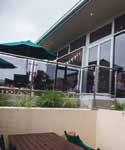

Great people, great food, great atmosphere. Enjoy what the club has to offer!
Club Facilities and Member Benefits
• Plenty of off street parking
• Rafters Restaurant
• Full TAB Service
• Gaming Lounge
• Pool and Snooker Tables
• Dartboards
• Kids Zone with gaming consoles and foosball table
• Live Entertainment
• Courtesy Van
• Members Draw Nights
• Meat Raffles
• Covered outdoor dining area
• Venue Hire at discounted rates
• Range of Social and sports groups available
Get in touch or simply fill out our online membership form at www.waipawmc.co.nz
Membership includes reciprocal visiting rights to other Clubs NZ clubs across New Zealand



Club Opening Hours
Monday 1pm – 8pm
Tuesday 1pm – 10pm
Wednesday 1pm – 8pm
Thursday 1pm – 11pm
Friday 1pm – 11pm
Saturday 10am – 11pm
Sunday 12pm – 8pm 07 871 3923
By Janine Krippner
“When it comes up it’s already too late” I hear as I listen to US news focused on Hurricane Milton as it moves towards Florida, towards the areas under so much stress from Hurricane Helene.
They are talking about storm surge, the water that was forecast to reach anywhere up to 3.6 metres in the Tampa area prior to landfall.
Last week I shared some of what my friend Danni was going through during and after Helene, I have been speaking with her daily as she has been picking through the ruins of her belongings, the mementos of her life so far.
Then Milton rapidly grew in the Gulf of Mexico and quickly became a horrific storm. Now the abundant piles of belongings and debris including furniture, bits of buildings, and tree branches, are at risk of becoming damaging projectiles. Cleaning up before Milton hits became an absolute priority.
While the winds are certainly dangerous, the greatest threat to life is storm surge. They say to run from the water and hide from the wind.
Storm surge is water being blown on land by the high winds of the hurricane and is the rise of water on top of the normal tide. The total water level is the tide, storm surge, input from heavy rainfall, and the waves. High water might not sound that scary, but it is.
This is a lot of water paired with a lot of wind, and there can also be deadly rip currents. It is also important to remember that it doesn’t take much water to sweep you off your feet or cause damage. We should take action with any level of expected surge.
On top of this, this water is not clean.
Fema (the USA Federal Emergency

Management Agency) lists “sharp objects, sewage, bacteria, chemicals, diseased insects, and animals” posing health and safety risk in floodwater. Water that soaks into homes, carpet, and furniture. Drowning in storm surge is the leading cause of death during hurricanes in the United States, flooding from heavy rain is the second.
The death toll from Hurricane Helene is well over 200 so far. The death toll does not measure the devastation, trauma, and great loss inflicted during these events.
We have been reminded that Aotearoa is not immune to hurricanes, called ‘tropical cyclones’ in this part of the world. It is important to watch these events so we can use these lessons. This includes how the storm impacts cities and towns, how technology is impacted (like lithiumion batteries catching fire after saltwater inundation), how they impact the environment, and how people respond. There is a lot to be said for the human aspect. Do people evacuate? Can people evacuate? What aspects made it more difficult to take the actions they need to? Misinformation is a huge issue with Hurricane Milton, with the chief of Fema saying, “It’s absolutely the worst that I have ever seen”.
We all have a part to play the next time New Zealand is in this situation. Increasing our understanding of these events before we need it can hopefully help us all to spot misinformation, and to understand why we need to take recommended actions to help ourselves.
By Christine Bryant, Lay minister, St John’s Anglican Church
I always enjoy scrolling through old photos. It helps me recapture special moments spent with people and in places I love.
Recently, I came across photos I took in Ketchikan, a small town in Alaska. They show a magnificent totem pole outside the town’s museum. It grabbed my attention so completely that I took a photo of the plaque beside it. This said that the totem was not one of the heritage totems, for which Ketchikan is famous, but one specially carved to honour those who had the vision of a local museum and gave time and money to see that it became a reality.
The museum is largely given over to telling the stories and showcasing the way of life of the Tlingit people who inhabited the area for centuries before the arrival of the first Europeans. It’s very much like the Te Awamutu Museum focuses on local history. Without the generosity of the people commemorated by the totem, those stories may well have been lost.
Amongst the members of St John, two mighty totara have fallen this year - Alan Empson and Keith Storey. Between them, these two faithful men gave countless hours not only to their church family but also to the community of Te Awamutu. As members of Lions, Rotary and church, despite being busy farmers, serving others was at the very core of their lives.
I remember an article written when the rose gardens were being reshaped to provide for the new playground which recalled that Keith used to drive the tractor into town
after his day’s work on the farm to help dig those first rose beds.

A long-time resident of Te Awamutu told me that Alan and Keith were two of the visionaries behind the Events Centre. Whether organising working bees or fundraising, they always led from the front, encouraging others to give of their best and refusing all recognition of their own pivotal role.
This reminds me of the parable of the Good Samaritan. True, this story is not about a community good; it is about seeing a need and responding fully to it. In this case, a man was beaten and left for dead by the roadside, ignored by the respectable men of the town. It took a generous Samaritan to pick the man up, find a place where he could be cared for and pay for his treatment until he was back on his feet. (Luke 10:25-37)
Every week in the Te Awamutu News there are stories of people who continue the work of the Alans and Keiths who built up this town and made it the community with all the facilities it now has. Some may be remunerated as councillors or board members, but they surely give much more than they receive. Much of what they contribute is out of a generosity of spirit and a desire to leave the community in a better space than before.
Keith asked for “Fide Fortis”, Strong in Faith, on his headstone. To Keith, Alan and all those who have contributed whether by faith or community spirit, we honour you.
By Mary Anne Gill
Visitor records have tumbled at Waipā community facilities in Te Awamutu and Cambridge.
For the first time more than 400,000 people visited the Te Awamutu Events Centre and Perry Aquatic Centre in Cambridge in a financial year ending June 30.
Waipā Community Facilities Trust is contracted to run swimming pools in both towns and a sporting stadium in Te Awamutu.
In a report to the council’s Service Delivery committee this week, trust chief executive Matt Horne said the ASB Stadium in Te Awamutu led the way with a 45.8 per cent increase in usage and occupancy rates from 88 to 160 hours a month.
Club Waipā gym membership increased 35 per cent to 1141 with a membership retention rate of 51 per cent.
In Cambridge, aquatic centre visits went up nearly 10 per cent to 14,706.
The Swim Waipā programme across both pools increased by 6.3
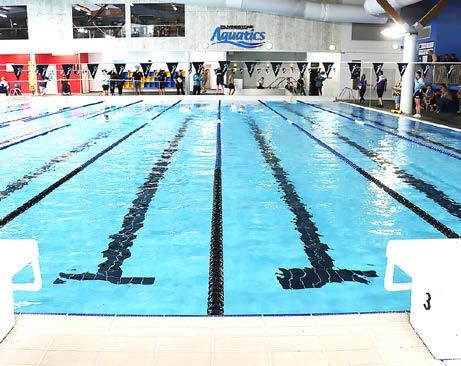
per cent with the Learn to Swim programme attracting 4337 visits.
And the new financial year has started in the same way with visits tracking 11.4 per cent ahead of the same time last year.
Pickleball sessions on Tuesdays and Thursdays are part of the reason for the increase at ASB Stadium while group fitness sessions are also exceeding expectations.
Financial revenue and

expenditure targets were also met. Ratepayers cover about half of the facilities overall costs.
The picture painted is far rosier than 30 months ago when post Covid, the trust reported a 20 per cent reduction in visitor numbers with revenue down.
The ASB Stadium seats up to 800 spectators and is used for a variety of events or sporting activities.
Perry Aquatic Centre


consists of an indoor 25m x25m pool, a learner/ hydrotherapy pool, tots pools and splash pad. It also has an upgraded 50m outdoor pool, which is open during the summer months.
The Livingstone Aquatics Centre is an indoor facility which includes a 25-metre pool, hydroslide, hydrotherapy pool, learners pool, toddler’s pool, spa, sauna and an inflatable obstacle course.



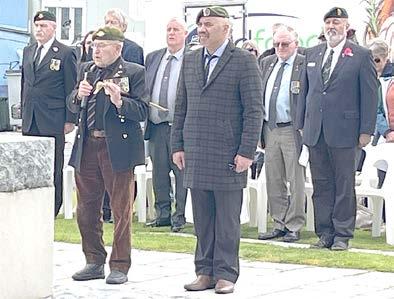
By Viv Posselt
A sombre gathering at Te Awamutu’s Anzac Green last Saturday marked the 107th anniversary of a battle said to represent one of New Zealand’s darkest days in World War One.
The battle at the small town of Passchendaele in Flanders, Belgium, on October 12, 1917, resulted in horrendous loss of life.
In his introduction, Te Awamutu RSA member Lou Brown said the battle was known as one in which the greatest number of New Zealand troops were lost in a single day.
Passchendaele is marked at different centres around New Zealand on October 12. A small commemoration was also held in
Cambridge.
Joining locals at the Te Awamutu event were around 20 members of the Hauraki Chapter of the Patriots Defence Force Motorcycle Club. They are all either current or ex-servicemen, and one of them, Mike Neville, spoke of the importance of remembering the day.
Research shows some 843 New Zealand soldiers were left either dead or mortally wounded between the front lines.
Cambridge-based RSA district president, and soon-to-be national vice president Tony Hill gave the closing address. He commented on the presence of the ‘old guard’ alongside the young Te Awamutu cadets, and said they represented the future.






By Chris Gardner
A war of words has broken out in Te Awamutu over the town’s war memorials which include the names of the fallen from the Waipā District and the King Country.
Te Awamutu War
Memorial Maintenance
Committee member Marc Dawson wants the Returned and Services Association to strike modern services logos from signs it is preparing for Te Awamutu and District War Memorial Park and recognise it as a second World War Memorial.
Dawson asked the signs be period correct.
“You’ve got on the mock up modern logos that are not as of August ’45,” Dawson said.
He said it was given and named by those who returned for those who did not.
“So that does specifically put it at World War II. And they mention that in the dedication. There’s clear evidence to show that the memorial committee of the day did decide that members of each armed
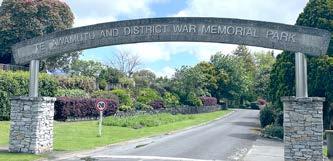
service branch would name foot bridges. The park was a recognition of the men who fell in World War II.
“The other issue with that sign is that it should read faithfully Waipa District War Memorial Park because that was the discipline of the day,” Dawson said. “It’s written as Te Awamutu War Memorial Park a lot but from mid-1950 onwards they did sincerely change the name. It was opened as Waipa District War Memorial Park.
But Waipa district councillor and Te Awamutu RSA committee member Lou Brown was “a little bit perplexed’.
“Although you think the memorial park is a repository, the memorial at the RSA is actually
much more up to date and inclusive,” Brown said.
“We have researched that and included a lot of names that are not in memorial park from our area of people who died and remained overseas. So, we commemorate that every week with the ode and a remembrance so anybody that wants to, that is the memorial in our RSA.
“It is Waipa and Districts because there are people in there from Kawhia, and Pirongia, and Otorohanga that are included in our area. So, we are a districts RSA not a district.”
Brown said the RSA had sought permission to use the modern logos on the new signage and would have to get further permission to use period accurate logos.

Focused Physiotherapy Te Awamutu is excited to have a clinic operating in Pirongia to support all of your injury and rehabilitation needs. We are located inside the Pirongia Rugby Club Building at 2 Kane Street, Pirongia. We are open from 8:30am to 4:30pm on Tuesday’s and Thursday’s.
Our services include:
ACC and non ACC Injuries (no referral required)
Chronic pain management
Neurological conditions
Concussion and Vestibular conditions
Cancer Rehabilitation
Pre and Post Natal
Pre and Post Surgical
Strength and Balance
Women’s Health
Injury Prevention & Management
We also offer:
Strenth and Balance Classes
Hip and Knee Strengthening Classes
Small group mat Pilates Classes
Meghan Hawkes looks back on
The abundance of hay in the Te Awamutu district led to those moving hay stackers taking dangerous risks. One man had a narrow escape when a stacker caught a power line, which came down on his back. His life had been saved only by the fact that he was wearing rubber boots. Moving the machinery under power lines without lowering them was discussed by the Te Awamutu Electric Power Board. In addition to the hazard to life, the hay stacker service was disorganised in the district. It was decided to give notice that in future there would be prosecutions for such breaches of the regulations.
At Te Rore School native trees were planted as a memorial to mark New Zealand’s centenary. Mr Connell, of the Department of Education, addressed the gathering praising the very fine effort made to commemorate Centennial Year. He said Te Rore School was the first in the Waikato to plant native trees as a Centennial gesture, and therefore the district could be doubly proud of its enterprise. All the school children, their teacher, the members of

the School Committee, and parents then proceeded to each plant a tree, making a very fine grove for future years. Lunch was served by the ladies, and a very interesting and important ceremony terminated.
The Te Awamutu A & P Association used about 150 yards of ribbon for decorating winning animals at its annual show, but this year innovation was necessary. Ribbon of the width and quality usually used was now not obtainable due to World War Two import restrictions. It was suggested that Te Awamutu should follow the lead of the Taranaki A & P Association by having championship ribands made from flannel. One, displayed at a Te Awamutu A & P meeting, was made of strips of red, white and blue flannel together with a fringe at each end, and neatly printed. The ribands were expected to please any owner of a champion.
One of the most interesting souvenirs of modern warfare to reach the district came from Colonel Pierce, New Zealand Expeditionary Force, which was stationed “somewhere in Egypt”. He forwarded the cap of an Italian thermos bomb to his family in Ōhaupō. The thermos bombs were about 151bs in weight, made of aluminium and shaped like a thermos flask. They were fitted with a cap similar to an insulation cup on a telegraph pole which was surmounted by a five-bladed propeller. The bomb did not explode on hitting the ground but had to be moved before detonating. Four of his men had been hurt when the Italians dropped the first thermos bombs, but the troops soon became wise and searched the countryside exploding hundreds of them.


Gayangee studied at the Sir John Kotelawala Defence University in Sri Lanka completing her studies in 2017. She had 6 years of general hospital experience in Sri Lanka before coming to New Zealand. Her areas of special interest previously were stroke, musculoskeletal and respiratory physiotherapy.
Gayangee is settling in to life in New Zealand and is keen to keep learning new things.
Family is important to Gayangee and she enjoys spending time with them. She speaks English and Sinhala.


Kate Paulsen

Kate grew up rurally and has a love for rural healthcare. Kate came to Focused as a new graduate and has spent time working in the clinic, in the school and rest homes and enjoys sports related physiotherapy.
Kate is developing a special interest in sport and paediatric sports, enjoying working with teenage athletes. She has also completed some training in cancer rehab and is beginning to focus on this. Kates love for surfing finds her at the beach with her family as often as she can. She is our squash superstar and also enjoys running.

Te Reo is important to Kate, she has learnt some Karakia and is trying to expand her language ability.

By Chris Gardner
New Zealand First was ready to deal with protestors at party leader Winston Peter’s public meeting on Sunday.
Matangi farmer and party co-coordinator for the Waikato and Bay of Plenty regions

Craig Sinclair told The News he was disappointed with the protestors who began protesting half an hour into Peters’ speech at the Distinction Hotel in Hamilton.
“We were tipped off,” he said. “We were told that there were some protestors in that crowd. We were ready for it.”
Peters was interrupted halfway through his hour-long speech at the end of the party’s annual convention when protesters burst in at the back of the room shouting “free Palestine”. Party faithful including Hamilton-based NZ First candidate for Hamilton West, Kevin Stone ushered them out after a couple of minutes and two arrests were made after the meeting.
“Isn’t it amazing they think that’s a day’s work,” Peters quipped to the crowd of around 900.
Sinclair, who switched National party membership for NZ First in 2017, described the annual convention as “hugely successful” and “one of our biggest conventions ever”.
Stone said in the current political climate protesters were expected,
Stone said people did not realise that New Zealand was broke, and blamed immigration. Riffing on Peters’ suggestion that the policy should be tweaked to “bringing in people we need, not just the people who need us” Stone said: “We have had that open door policy. We can’t have that influx we have had for years now.”
Pirongia based board member Pip Eyre, who also works for the party leader’s office,
By Chris Gardner
Sanctuary Mountain Maungatautari
volunteers have responded to the project’s funding crisis with a book – to tell an alternative story.
Volunteer Viv Clarke said the group of 18 long-term volunteers spent three years writing the book, filling it with stories hailing back to the dawn of the project 25 years ago “before they are lost forever”.
“Our group were just thinking that the Maungatautari project has had such a lot of negative publicity recently over the financial woes, that it would be wonderful to promote the positive stories in the book,” she said.
Philanthropists have met Sanctuary Mountain Maungatautari’s cash flow crisis head on with $250,000 worth of funding, The News reported last month.
The book is described as a lively and interesting record from those who were involved in the early days.
The volunteers were initially aiming to create a coffee table style book but could not
attract funding so they decided to self-publish the book.
The book tells the story of the people who dreamed of encircling Maungatautari with a pest-proof fence, how the community participation took place and how the Maungatautari Ecological Island Trust was established to begin the task of restoring the mountain’s earlier ecosystems.
“Today the Maungatautari mountain ecosystem is flourishing with healthy native plant and animal life,” says the book’s introduction.
“Threatened species are breeding successfully on the 3400 hectares inside the pest-proof fence.
“The birdsong that was once on the verge of disappearing forever is returning, and a lush bush canopy is rapidly regenerating. It has become a world-class conservation project and is already as close to the pre-human New Zealand environment as it is possible to find at present.
“It is also an example of what the future could bring if Predator-Free 2050 succeeds.”
saw “renewed excitement for what we are doing”.
There was no chance for the public to ask questions at the public meeting, but the smiling audience didn’t seem to mind. They gave Peters a standing ovation when he entered the podium, and again when he left, applauding and chuckling throughout the hour he shared his philosophy of “one country, one people, one flag” and his “mission to bring equality to all” and build a society where people “survive and thrive if they make the effort to”.
“We have been knocked down, and we have got up again, over and over again, and we did not have a court case,” he quipped before rattling off a long list of success stories including SuperGold discount cards for
people aged 65 and over.
He also celebrated the establishment of the Provincial Growth Fund, describing NZ First as a party that understands the provinces.
“For the third time we have addressed the problem of police numbers.”
The 2024 Budget included $191 million over four years to fund the recruitment and retention of 500 more sworn police officers and a further $34.6 million in capital to ensure that they are properly equipped to do their jobs.
Peters also spoke of assisting “the crucial funding” of Hato Hone St John. He spoke out against the wokeness he pinned on former coalition partner the last Labour-led government and lamented the decline in political standards.








Discover our charming one- and two-bedroom cottages at Cambridge Resthaven, where you can enjoy a vibrant community atmosphere in the heart of our retirement village.
These classic brick cottages, built in the 1970s and 1980s, are available to occupy under an Occupation Right Agreement (ORA) basis, starting from $360,000. There is 50/50 shared capital gain benefit if the ORA value has increased when you leave.
Sandra Fairhurst 07 827 6097














By Chris Gardner
“Farmers aren’t making money, and the Rural Support Trust is busier than ever,” Federated Farmers Waikato president Keith Holmes says.
Waikato Rural Support Trust Chair
Neil Bateup confirmed calls to the trust in September were up 15 per cent on 2023, which had been up a similar amount from 2022.
Farmers called the trust to discuss employment issues, financial matters, mental health, stress, and other issues.
“We lend an ear,” said Bateup.
Holmes said Waikato Federated Farmers was deeply worried - and focussed on getting profitability back into farming and for farmers.
“Returns and product prices will always be in the media headlines. However, it is the insidious, rampant increase in costs that has destroyed the viability of our farming enterprises.
Holmes, a former Karāpiro dairy farmer turned sheep, beef and cropping farmer, said a $2 per kilogram of milk solids increase in dairy farm operational costs over seven years had sucked the innards out of dairy farming. Arable, beef and sheep farming operations had fared no better.
“Farming must have profit to reinvest, to pay staff and keep the banks off our backs. The stupid narrative of ‘breaking-even’ must stop. Breaking-even is merely sliding into inevitable foreclosure. The narrative needs to be that ‘profit is healthy and necessary’ to drive both our own businesses and the greater Waikato economy.”
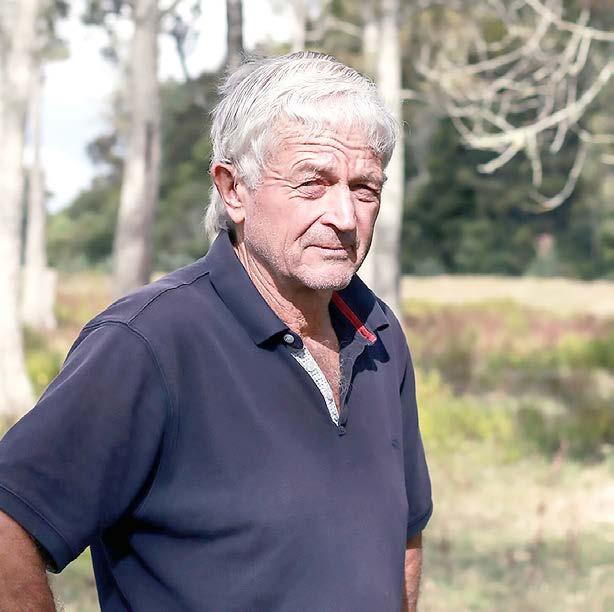
Holmes said Waikato Federated Farmers was fully committed to rolling back the colossus of stultifying costs, such as unnecessary compliance, unnecessary data collection, and driving bureaucratic efficiencies.
“We have and will continue to interface with Waikato Regional Council, in an effort so far successfully to work with them to reduce costs and create mutual understanding.”
Holmes said members had to think differently.
“We have so many things we have to deal with. The act of bringing it all through the chair is really not practical anymore. We have to think differently.”

Because the workload is so large, Holmes has expanded portfolios within Waikato Federated Farmers.
“Within the sectors we also have to give more autonomy for the actions and outcomes from the working groups.”
AS an example, Hamilton branch
chair John Bluett had sent a submission to the Government on the future of Agricultural Education post Te Pukenga.
“The consultation was with those of us who have an interest in the subject,” he said. “I was very impressed with the submission, especially given the short time we had.”
Holmes asked members to become nimble and responsive, attaching members to interest groups.
“Democratic decision making comes in many forms – but it should never revert to the ‘sludge’ of local body consultation, with no decisions ever being made,” he said.
Holmes described the advocacy Waikato Federated Farmers participated in as selfless, demanding, and relentless, in terms of workload.
“The wins are there to be seen and coming fast,” he said.
Holmes empowered section and branch chairs to engage in member advocacy.
“I have had a discussion with Dairy vice chair Louise Gibson about what sharemilkers are doing,” he said.
The Sharefarming Consultants founder Gibson, a former Federated Farmers policy advisor, is currently focussed on ensuring contracts between farm owners and sharefarmers don’t have any fishhooks.
“We trust Waitomo branch chair Chris Irons,” Holmes said. “It’s the same with, and Arable chair Donald Stobiet.”
“We have to be careful we don’t rely too much on individuals,” Irons said.
“We have to be nimble and pull people in.”


Fonterra Co-operative Group Ltd has announced changes to its management team.
Managing Director Cooperative Affairs Mike Cronin has been leading the potential consumer divestment process and will work on that full time.
Former Fonterra alumni
Matt Bolger will return to the Co-op as Managing Director Co-operative Affairs position from next March.
Fonterra chief Miles Hurrell says exploring options for the potential divestment of the companies consumer businesses was one of the most important projects
Fonterra had undertaken and had the potential to unlock significant value.
“Cronin would “step away”
from the Managing Director Co-operative Affairs role to dedicate his time to the potential divestment and remain a member of the Fonterra management team.
“Mike has been with Fonterra since 2002 and has been involved in a number of key strategic projects for the Co-op, including Trading Amongst Farmers, the Governance and Representation Review, the Co-operative Difference and Flexible Shareholding.
“I’m also pleased to announce Matt Bolger’s appointment to the Managing Director Cooperative Affairs role and look forward to welcoming him back to the Co-op on the 5th of March,” says Mr Hurrell.
Bolger previously spent more than 18 years with Fonterra in a variety of roles, including General Manager Capital Strategy and Director of Farmer Services, as well as time leading global sales teams offshore.
He became Pro ViceChancellor of Waikato University Management School in 2020 and is chairman of the Dairy Companies Association of New Zealand.
“As Managing Director Co-
operative Affairs, Matt will be responsible for functions including Farm Source, Global Stakeholder Affairs and Trade, Governance, Risk and Audit, Corporate Communications, Legal and Māori Strategy. “As we implement our revised strategy, Matt’s knowledge of the Coop’s farmers, stakeholder relations experience and commercial acumen will serve him well,” says Mr Hurrell.
By Chris Gardner
Geoff and Johanna
Fitzgerald are inviting 600 hikers to walk for a cause across their Wharepuhunga sheep and beef farm.
The couple, who have farmed the 450ha Duncan Road property for 24 years, have has created the Maungahau: Walk for a Cause charity walk, with hikers choosing from a 6.5 km or 10 km cross-country walk on their sheep and beef farm on October 19.
Walkers pay $80 to complete and, if registrations are full, the Fitzgerald’s will raise $48,000 for two good causes. The walks will also include the neighbouring farm owned by the Kimton family. All proceeds from the

Johanna and Geoff Fitzgerald are inviting hikers to walk for a cause across their farm.
walks will be split between Waikato Westpac Rescue Helicopter and Waikato Hauraki Coromandel Rural Support Trust.
The Fitzgeralds have benefitted from both services over the years.
“We have capped it at 600 walkers because of our health and safety plan that we have got in
place,” Geoff Fitzgerald, 74, said.
The short walk is expected to take two to two and half hours, the long walk three to three and half.
“We hope to do it annually, give people a really good experience, and be able to increase the numbers next time.”
Te Kūiti farmer Mitchel Hoare has won the AgResearch Emerging Achiever Award. The 29-year-old, who is sheep and beef farming on about 240ha at Rangitoto, was among the winners and the 2024 Beef and Lamb awards night in Hamilton last weekend.
Around 300 people were at the awards event which recognises people, technologies and innovations that contribute to the red meat sector.
The judges said Hoare was actively working towards farm ownership, was motivated and innovative, demonstrated experience and achievements within the sheep and beef sector as well as strong community involvement.
Other winners were Ballance Agri-Nutrients Science and Research Award - Research Plant Scientist Dr David Hume; Datamars Livestock Technology Award - FarmIQ Freshwater Farm Plan Tool; Gallagher Innovative Farming Award - Wairarapabased Fernglen Farm; Silver Fern Farms Market Leader Award – Headwaters; Rabobank People and Development Award - Growing Future Farmers. FMG Rural Champion Award - New Zealand Farm Environment Trust. Alliance Significant Contribution Award - Ian McIvor.





















NZ Designed Filtration Systems for the Removal of Iron and Manganese and Other Rural Problems
Results guaranteed
Fully automated
NZ designed systems tailored to suit your water issue
Latest in electronic technology, wireless alert systems
Servicing the Waikato, Bay of Plenty, Taranaki & Gisborne
Full Scale portable demonstration plant available*

By Stu Kneebone
As we come out of winter and into spring, a reminder to landowners that that both the Waikato Regional Council (WRC) and the Waikato River Authority have contestable funding available to landowners to assist with restoration of wetlands, rivers and streams and steep and eroding land. The regional council is also able to access funding from the Ministry of Primary Industries Hill Country Erosion fund to assist landowners with retiring and/or stabilising steep eroding land that is not suitable for livestock farming.
The WRC portion of this funding is sourced primarily from a targeted catchment rate that is applied depending on which catchment zone you are based in, plus a general rate contribution of approximately 15- 20 per cent.
These rates are based on property value. Funding is generally prioritised to the parts of the region’s catchments that have been identified as a priority for funding assistance. This is primarily about ensuring that our limited public funding is utilised effectively in a way that we can be confident will deliver results for the catchment as a whole.
The Waikato River Authority makes contestable funding available via its Waikato River Clean up Trust for restoration projects in the Waikato and Waipā river catchments. This funding was made available via a treaty settlement that was negotiated by Waikato River Iwi with the Crown in 2010, following recognition that the river was degraded, and should not have to accept further degradation as a result of human activities.
The Authority allocates approximately $6million a year to restoration projects in the
Waikato and Waipā river catchments. Its funding decisions are guided by the Waikato and Waipā river restoration strategy.

For those landowners in the Karapiro Stream and upper Mangaonua Stream catchments, which include the communities of Te Miro, French Pass and Whitehall, you may be eligible for up to 70 per cent of the cost of fencing and planting.
Contact Georgia Roguski, Catchment Management Officer to discuss further. For those in the wider Waipa catchment, ask for your local Catchment Management Officer. Again, similar funding assistance is available via the Waipa Catchment Plan programme.
Type of works eligible for funding include: Fencing to retire steep/erosion prone land. Re-vegetation of retired steep/erosion prone land with a mix of native plants using small plant sizes to keep costs down. Planting of poplar poles to help stabilise land slips.
Poplar poles come with a protective sleeve which allows grazing to continue. Fencing of wetlands and eroding streams. Planting of eroding streambanks
The council is keen to engage with landowners early to plan and prepare for next winter’s planting programme so plants, work programmes and associated budgets can be organised.
If you have areas on your farm that you are thinking about fencing off and planting, please contact us early to avoid missing out.
In New Zealand, if a relationship has lasted at least three years, the Property (Relationships) Act 1976 applies (“the Act”). The division of relationship property is generally 50/50, regardless of what has occurred. Here we explain more about relationship property and how it’s divided.
When does the Property Relationships Act apply?
If you are married, in a civil union partnership or in a de facto relationship (including same-sex couples) and have been in the relationship for three years or more, when your relationship ends by separation or because one of you dies, you will be a ected by the Property (Relationships) Act.
What is ‘relationship property?’
Relationship property includes things like your family home and property, family businesses and investments, property owned jointly or in equal shares by the partners, property acquired during the relationship. It also includes superannuation and insurance policies, cash and increases in the value of any relationship property, any income earned from assets or the sale proceeds from selling assets.
How is relationship property divided? Under New Zealand law, the general rule is
that relationship property is divided equally (50/50) between you, regardless of the reasons why you are separating. For parties to have a binding relationship property and separation agreement that is enforceable in court, solicitors for each party are required to certify the agreement to say they have provided independent legal advice to their client on the terms of the agreement, and that their client understands those terms.
Do we have to divide things equally or can we do what we want?
You have the option to divide your relationship property how you wish, provided that full disclosure of relationship property assets and debt have been provided and you have received independent legal advice from your solicitor. This is especially important when there is a family home that either needs to be sold, or one person is retaining it on settlement. When you are both in agreement as to how the division of relationship property will happen, a
separation agreement is dra ed setting out the agreed terms and signed by both parties and their solicitors. It is at this point settlement of your relationship property is completed.
Is debt included in relationship property?
A starting position is that any debts incurred during the relationship are relationship property debts, regardless who’s name the debt is in and whether you knew about it. The responsibility for relationship property debts is shared but personal debts remain the responsibility of the person who incurred them. Relationship property debts


are things like debts incurred jointly (such as bank loan to purchase a house), credit card debt, personal loans, hire purchases etc.
Engage a relationship property lawyer as soon as possible.
Understanding your legal position early in the process is vital. Assets will not necessarily be divided how you expect, and valuable time can be saved if you understand from the outset what the correct legal position is. This then enables negotiations to take place from an informed position and helps to bring matters to an end as cost e ectively as possible.

































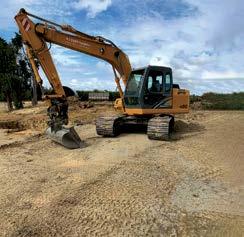






































Kaiāwhina/ Associate Teacher
Part-time (33 hours per week)
Te Awamutu:
He tūranga e wātea ana ki te Kura o Ngā Purapura o Te Aroha. E kimi ana mātou i tētehi Kaiāwhina e mōhio ana ki ngā mahi whakaako tamariki mō te kura. Me matua mōhio hoki te kaitono ki ngā mahi whakahaere i te akomanga, me ngākaunui hoki ki ngā mahi whakaako tamariki. Me mōhio te kaitono ki te reo māori me ōna tikanga. He kura tēnei e hāpai nei i ngā wawata me ngā tumanako o ā mātou tamariki mokopuna. E whakapono ana mātou, he taonga te tamaiti, ko rātou hoki te pūtake o tā mātou kaupapa. Ka katia tēnei tono hei te 31 o Oketopa,2024. Tukua rānei tō Tātai Oranga ki te Kaiwhakahaere: tari@npota.school.nz
Attention: Te Wharekura o Ngā Purapura o Te Aroha. Enquiries (07) 871 4844

































for delivery of the Te Awamutu News, your local weekly community newspaper.
Deliveries are to occur every Thursday. Are you honest and reliable and would like to earn some money while keeping fit? Our runs are suitable for either youth (minimum age 11 years) or adults.
Delivery runs available in the following area: • Taylors Ave, Greenhill Drive, Racecourse Road
Please contact us on E: admin@goodlocal.nz
Provide your name, phone number, and the area you are located.


ROAD CLOSURE Saturday 26th and Sunday 27th of October 2024
Please note that the road/s listed below will be closed to ordinary vehicular traffic for the Targa Rally NZ 2024 on:
Saturday 26th October 2024 between 12:35pm and 4:35pm
• Mangare Road – from Rotongata Road to Waipa District Boundary
Saturday 26th October 2024 between 12:15pm and 4:15pm
• Aotearoa Road - from Waipapa Road to Waipa District Boundary
Sunday 27th October 2024 between 9:25am and 5:10pm
• Waterworks Road – from Chepmell Road to Te Miro Road
• Te Miro Road – from Waterworks Road to Flume Road /Aspin Road intersection
• Aspin Road – from Flume Road to Fencourt Road
Sunday 27th October 2024 between 10:25am and 6:10pm
• Maungakawa Road – from Fencourt Road to Te Miro Road
• Te Miro Road – from Maungakawa Road to Brunskill Road
• Brunskill Road – from Te Miro Road to French Pass Road
• French Pass Road – from Brunskill Road to Maungakawa Road/Thornton Road intersection
Arrangements will be made for access by emergency vehicles during the closure, if required.
For more information please contact Waipa District Council on 0800 924 723 or email events@waipadc.govt.nz
Steph O’Sullivan CHIEF EXECUTIVE

FIRST NATIONAL
Saturday 19 October
414 Elizabeth Ave $869,000 12:30-1:00pm
107 Meddings Cresent PBN 1:30-2:00pm

Contact listing agent prior-visiting as Open Homes times can change.



2004 XTrail Nissan – good condition, good service records, $5000. Prescott car trailer, good condition, $1600. Ph 0274 736 042
DENTON, Graham Alan – Peacefully passed away at Tamahere Eventide on Monday, 7th October 2024, aged 83 years. Dearly loved husband of the late Valerie. Much loved father to Terry, Gail, Vicki, Peter, Barry and Lynette. Devoted poppa and great poppa to all his grandchildren. Special thanks to the staff of the Kowhai Unit at Tamahere Eventide for the love and care shown to Graham over the past four months. A celebration of Graham's life will be held at the Wesley Chapel, Tamahere Eventide, Bollard Road, Hamilton on Saturday, the 12th of October 2024 at 10:30am followed by the burial at The Te Awamutu Lawn Cemetery. Donations to Tamahere Eventide Kowhai Unit would be appreciated and may be left at the service. All communications to the Denton Family, c/- 262 Ohaupo Road, Te Awamutu 3800.

• Engagements • Weddings
• Births • Anniversaries
• Bereavements
• In Memoriam etc
Call Janine 027 287 0005 e: janine@goodlocal.nz




















Husqvarna’s high-quality Xplorer leisure wear is designed to keep you comfortable and con dent - whether you want to relax or explore, at home or in the great outdoors.














The perfect solution for midsized to larger areas or as a complementary trimming tool for ride-on or robotic mowers.














